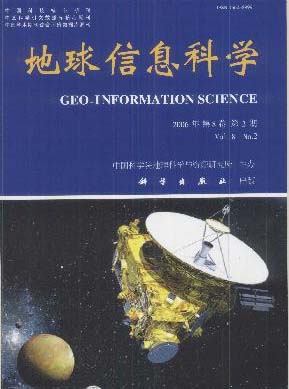ARTICLES
CHEN Shupeng, LU Feng
2006, 8(2): 1-5.
Metropolitan region, which symbolizes the human civilization, is gradually formed by the long-term interactions of both natural and social factors. Especially in China, development of metropolitan regions has become one of the most significant strategies for its future regional planning. Moreover, it is believed that the latest trend for regional development should be spatial structure adjustment in order to increase the economic benefits, as global economy competition becomes even more striking than ever before. Currently, lots of metropolitan regions on our backland successively form and grow; the number of which almost comes to 30, including the three well-known entities, i.e., the Yangtze River Delta metropolitan region, the Pearl River Delta metropolitan region and the Beijing -Tianjin -Hebei metropolitan region. However, those experiences from worldwide metropolitan regional development show that it will be a natural principle that large amount of people and investment pour into super port-cities and bring through non-equilibrium of regional economic growth and dependence on the coastal areas. Therefore the planning and development of metropolitan regions should observe such a principle of social and economic development. The formation of metropolitan regions goes through long time history accumulation. When it was in agricultural times, these regions were inner ports containing large population and dense river networks. When it was in industrial times, they were outer ports connecting the world. When in current information times, they are developing towards modern airports and information ports. Only all sorts of ports integrated can they possess the whole functions of world-class free ports. It is the ultimate goal of regional economic development. From the view of the geo-economy, the metropolitan regions generally have obvious regional economic superiority and leading effect of the financial center, ahd occupy absolute proportion of GDP. Along with the unceasing expansion of commuter circles and capturing of the continental heartland, the metropolitan regions have broken the spatial -temporal distribution pattern of the administrative divisions, impelled the regional economic reorganization and promoted it to develop towards the transnational economy. The development of metropolitan regions is of extreme imbalance and each has its own characteristics, but generally exhibits similar development phases and regularities in regional heterogeneous pattern. Of the three big metropolitan regions, analyzed from the geographical location, the Beijing-Tianjin-Hebei metropolitan region has the humanities superiority; the Pearl River Delta region which adjoins the international metropolis Hong Kong, has the location superiority in Asia; and the Yangtze River Delta region has the potential of "butterfly effect", which unfolds the global charm to attract the whole world. Interior cities within the metropolitan regions also compete for key city intensely with each other. Since the differences in economic development level, development opportunity, location superiority and human factor exist, in order to enhance the metropolitan regional cohesive force and competitive power, overall planning should be made and different measures should be identified under the guidance of scientific development concept of mutual supplement of each city and surmounting their respective obstacles in the process of development. Dynamic monitoring with high-resolution satellite remotely sensed images reveals that these metropolitan regions have some common fault such as heat island effect, inversion layer air pollution, groundwater funnel, land subsidence, sea water invasion and green space insufficiency. In addition, researches indicated that these regions are extremely weak on emergency reaction. Considering the strong mutual dependence of industrial structure and the production process inside the metropolitan regions, in the planning and developing process of metropolitan regions, it should be kept in mind that early warning mechanism and emergency solutions should be established aiming at the serious environmental situation, and guaranteeing the sustainable development of metropolitan regions.
